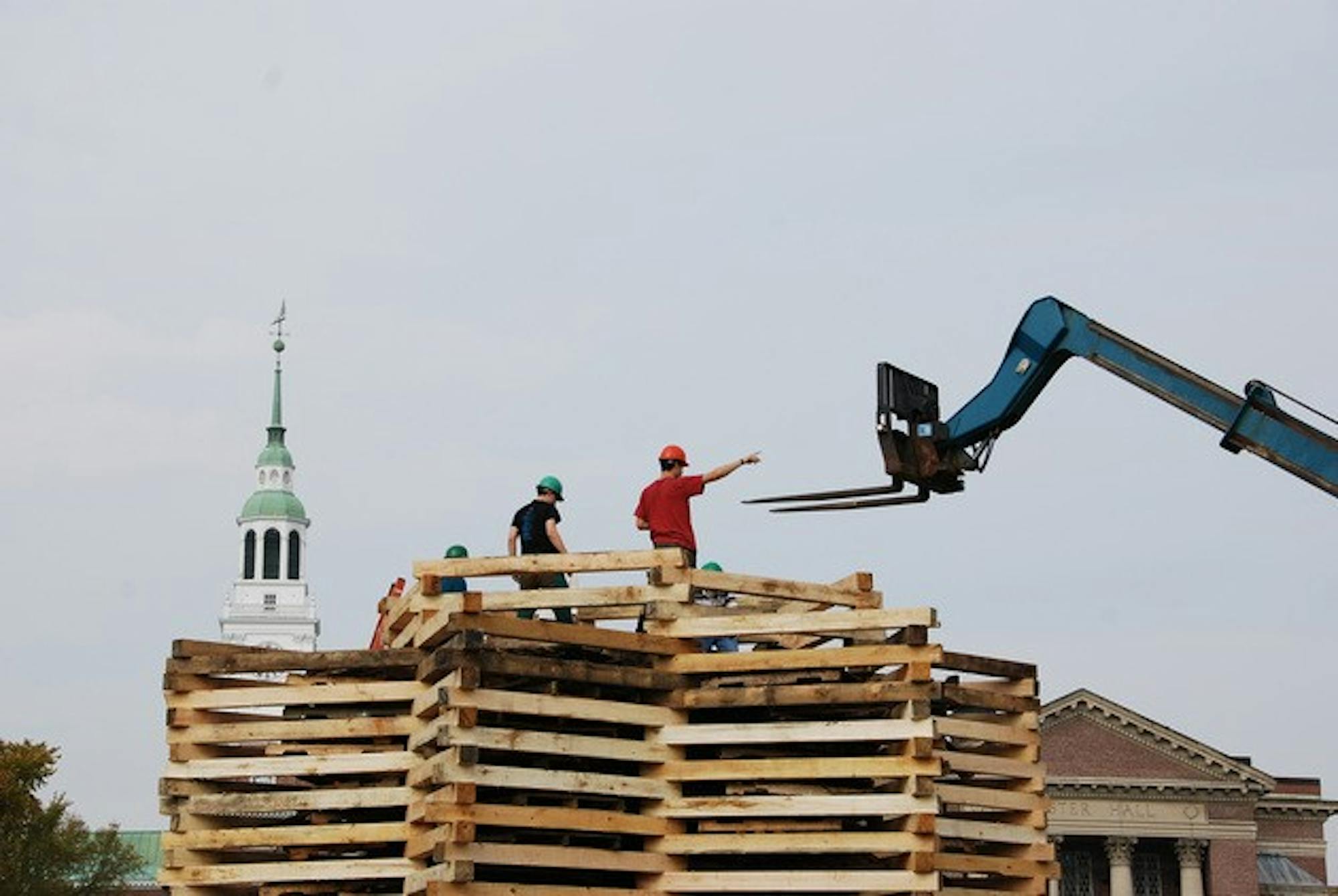The College's history of building bonfires began in 1888 after a baseball victory over Manchester College. Following the game, students gathered everything that was both flammable and portable to build an impromptu bonfire in the middle of the Green. An angry editorial in The Dartmouth denounced the event, saying that it "disturbed the slumbers of a peaceful town, destroyed some property, made the boys feel that they were men and, in fact, did no one any good." Despite these humble origins, however, the bonfire was here to stay.
Building bonfires actually became so prevalent at Dartmouth that the administration was forced to intervene "to save what was left of town outbuildings and other combustibles not firmly pegged down."
While the College held its first organized bonfire in 1893 after a football victory over Amherst, freshmen did not begin running around the fire until 1904. To honor the visit of William Heneage Legge, the sixth Earl of Dartmouth, and Winston Churchill, the students formed a parade, and, led by Lord Dartmouth himself, marched around the bonfire clad only in pajamas.
Since then, Dartmouth Night has had to endure a series of mishaps. Some have come in the form of the weather, such as in 1952 and 1963.
More often, however, Dartmouth Night disruptions have been manmade.
In 1968, pranksters from the Dartmouth Outing Club delayed the lighting of the bonfire for approximately 20 minutes when they switched the kerosene used to light the bonfire with water.
In 1971, a local farmer donated his barn to be used in the construction of the fire. Students, however, accidentally went to the wrong barn. Two days after students burned the wood they found within, the owner of the barn called the Hanover Police department to report that his wood had been stolen.
Interrupting the bonfire has often been used as a form of political protest. Such political tensions caused the College to cancel the bonfire from 1969-1972, while in 1976 far-left dissidents sabotaged the bonfire by causing it to burn down before Dartmouth Night could occur. In 1991, students protested the College's newly instated ban on open alcohol sources by chaining themselves to the bonfire, chanting, "We want kegs! We want kegs!"
Human error has also been responsible for interfering with Dartmouth Night. In 1980, the bonfire was lit prematurely, burning for several days, and in 1987, the entire bonfire was disassembled after a bomb scare so that police could look for a stick of dynamite. None was found.
Despite the mayhem that has often attended it, the tradition of the bonfire has endured.
During the 1950s, bonfires were so popular that they were featured not only on Dartmouth Night, but at every football game rally. A special radio network was even established to bring Dartmouth Night to alumni across the country.
Many safety precautions are taken in the building of the bonfire. Students at the Thayer School of Engineering have designed the bonfire to collapse in on itself, rather than on students, when it burns out. As a piece of burning debris falling from the fire could still potentially injure a student, a white line which students cannot cross will be drawn around the fire to create a safety zone.
"We have risk-management people present at our weekly meetings," bonfire co-chair Martha Gillon '11 said. "It's all very planned out and heavily monitored. Safety and Security and the Hanover Police department will both be on hand to prevent you from touching the fire."
The freshman class will manage and construct the bonfire. Under close supervision, a 15- to 20-person construction crew will assemble the structure itself, while other freshmen serve as bell ringers, poster and t-shirt vendors, letter carvers, and construction recruiters. Students from Dartmouth Medical School are also on site to provide emergency care.
"I'm really excited and happy I got involved," Gillon said. "I'm looking forward to seeing it all come together."




